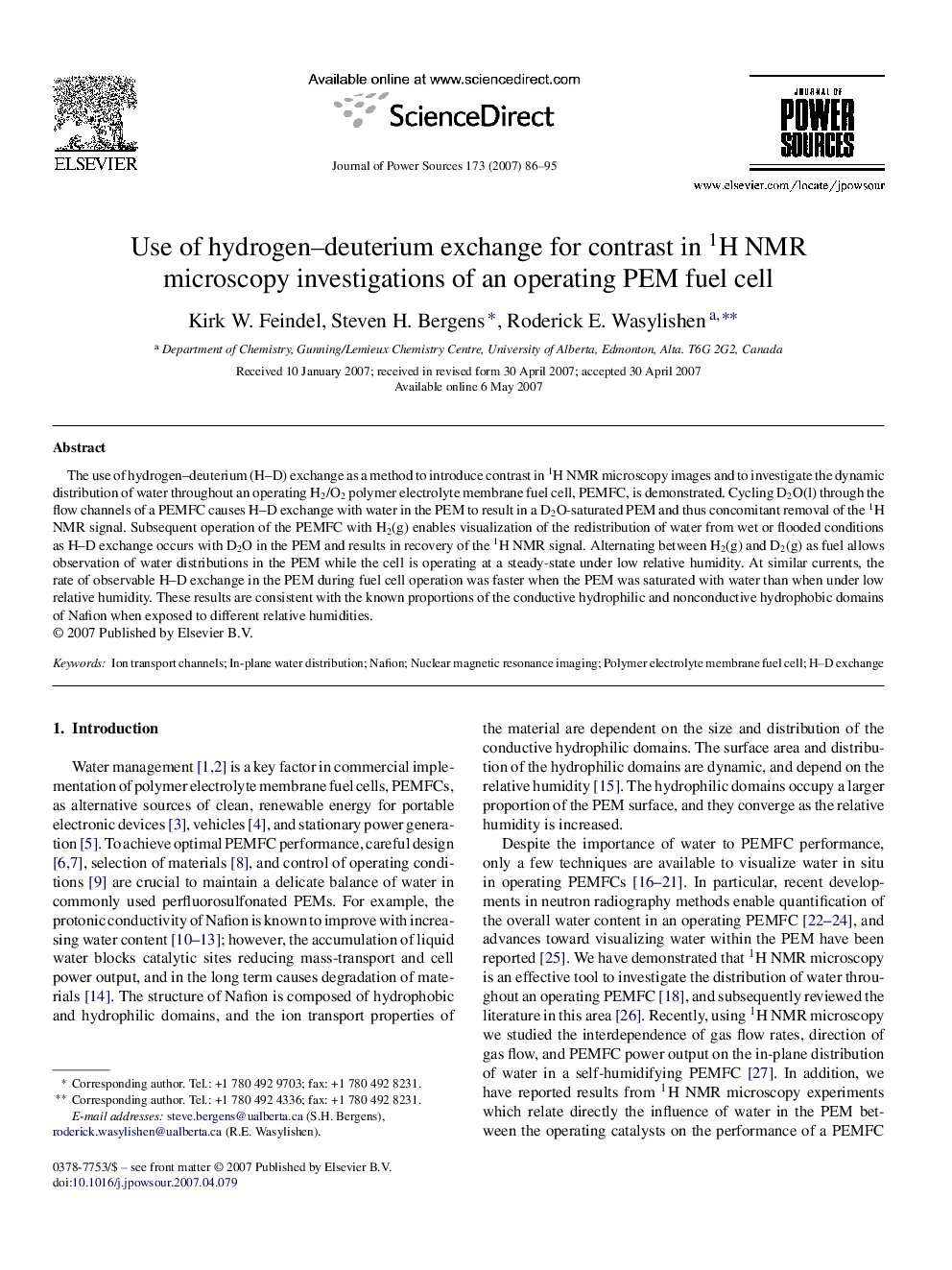| Article ID | Journal | Published Year | Pages | File Type |
|---|---|---|---|---|
| 1294872 | Journal of Power Sources | 2007 | 10 Pages |
The use of hydrogen–deuterium (H–D) exchange as a method to introduce contrast in 1H NMR microscopy images and to investigate the dynamic distribution of water throughout an operating H2/O2 polymer electrolyte membrane fuel cell, PEMFC, is demonstrated. Cycling D2O(l) through the flow channels of a PEMFC causes H–D exchange with water in the PEM to result in a D2O-saturated PEM and thus concomitant removal of the 1H NMR signal. Subsequent operation of the PEMFC with H2(g) enables visualization of the redistribution of water from wet or flooded conditions as H–D exchange occurs with D2O in the PEM and results in recovery of the 1H NMR signal. Alternating between H2(g) and D2(g) as fuel allows observation of water distributions in the PEM while the cell is operating at a steady-state under low relative humidity. At similar currents, the rate of observable H–D exchange in the PEM during fuel cell operation was faster when the PEM was saturated with water than when under low relative humidity. These results are consistent with the known proportions of the conductive hydrophilic and nonconductive hydrophobic domains of Nafion when exposed to different relative humidities.
